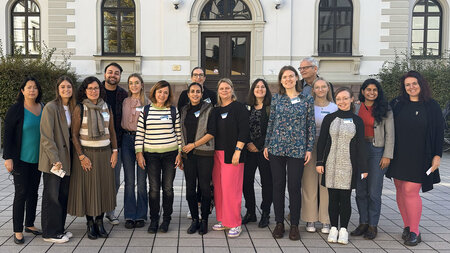Eye Tracker
Description
In our department, the stationary system is primarily used for cognitive research. The systems samples with a rate of 120 Hz. Thereby it tracks gaze parameters like the duration and location of fixations as well as saccade length and pupil size. The mobile Eye Tracking Glasses are mainly used in applied research and dynamic contexts outside the lab.
Technical details
|
|
Eye Tracking System SMI iViewX RED120 |
Eye Tracking Glasses SMI ETG2 120 Hz |
|---|---|---|
Manufacturer/model: |
Remote/stationary Eye-Tracker RED120 (Remote Eyetracking Device) from SMI |
Mobile binocular eye tracking up to 120 Hz sampling rate from SMI |
Main features: |
|
|
Research: |
Lab studies, experimental studies, usability studies on screens |
Mobile eye tracking for dynamic real-world scenarios (rooms, vehicles, supermarket...) |
Further information: |
||
Application
Research with the stationary system focuses mostly on memory processes as well as processes of diagnostic reasoning. In addition, the field of usability research, for example the evaluation of websites, holds interesting scopes of applications for the stationary system as well. The mobile Eye tracking glasses are mainly used for dynamic settings with large and non-predefined areas of interest. Examples are driving simulator studies, on-road studies in real traffic or usability research in field tests. Glance behavior is highly relevant for research on attention, safety and human-machine-interaction in general.





